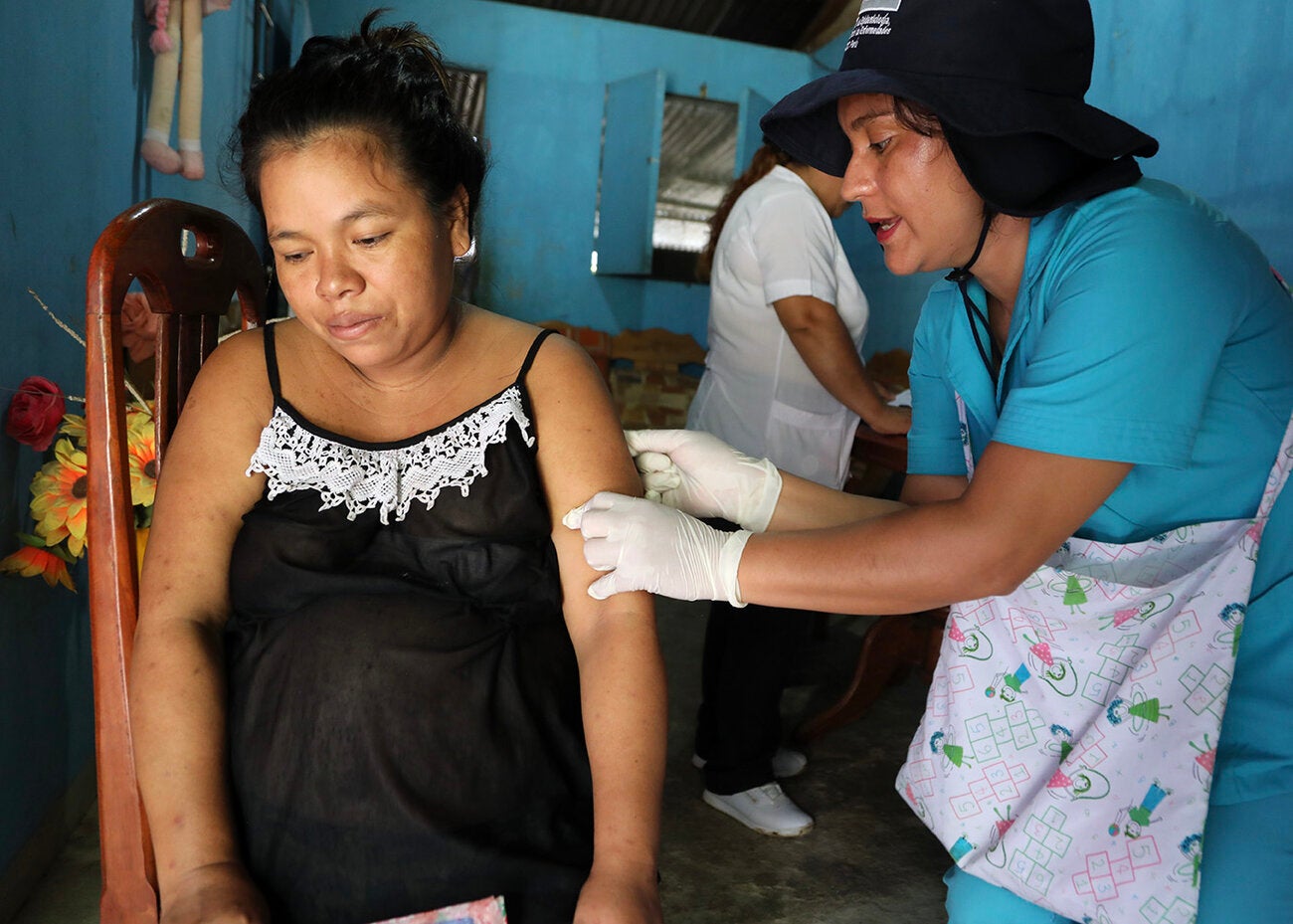During pregnancy, mothers and children share everything––even the antibodies created by vaccination against tetanus, whooping cough, diphtheria, and influenza.
It is a hot and humid morning in Maynas, in Peru’s Amazon region. Nurse Nancy and her team from the Progreso Health Center of the District of San Juan, in the Department of Loreto, prepare to go out into the community.


Peru has seen an increase in whooping cough cases since 2017, especially in children under 1 year old. The Department of Loreto has the largest number of cases in the country.
In light of this increase, the Ministry of Health of Peru, along with the Pan American Health Organization (PAHO), analyzed the epidemiological situation and examined recommendations for the vaccination of pregnant women. In 2019, the Ministry of Health introduced the Tdap vaccine for pregnant women. Mothers who are protected against whooping cough also transfer the antibodies to their babies, who will be protected during the first weeks of life, when they still are too young to be vaccinated directly.
A single dose of this vaccine administered to pregnant women during the second or third trimester of each pregnancy protects not only the mothers but also the newborns at their most vulnerable stage, thus helping to reduce disease and death in children under 1.
A single dose of this vaccine administered to pregnant women during the second or third trimester of each pregnancy protects not only the mothers but also the newborns at their most vulnerable stage, thus helping to reduce disease and death in children under 1.
Laurinda is one of the nurses who is going out to vaccinate. She makes sure that the cold chain for storing the vaccines is secure. Every day, she rigorously follows the protocol for preserving and handling the vaccines, and she prepares the thermoses that the team use to transport the vaccines on their door-to-door mission.


Before leaving, Laurinda vaccinates her colleague Salvit Karen against whooping cough, tetanus, and influenza. The two women join the team as they go out into the neighborhood to vaccinate pregnant women.



The vaccinators arrive at Manuela’s house in the Progreso neighborhood. Manuela welcomes them with her mother, Marisa. Manuela has attended all her prenatal checkups, but has not received either the Tdap or influenza vaccine.
The health workers warn Manuela that there is a whooping cough outbreak in the area. They inform her that by being vaccinated she will also protect her baby for a period after birth—a two-for-one deal!
Marisa, Manuela’s mother, is very excited about the arrival of the baby. She thanks the entire team for coming to the house to vaccinate her daughter and protect her future grandchild. “Everyone wins!” she says.


Distributing vaccines is not easy in the Amazon region, given the challenging geography: dense virgin forest in a tropical climate with constant rain, and long distances separating health facilities from communities.
For this and other reasons, the Ministry of Health of Peru makes great efforts to reach vaccination coverage targets in these communities, and to meet the population’s primary health care needs—either at permanent health centers and other fixed locations, or through the use of mobile units. The emphasis is on health promotion and prevention of risk and harm, and on encouraging citizen participation.
In 2018, 46% of pregnant women in Peru were vaccinated against tetanus, diphtheria, and whooping cough, and 38% against influenza.
With the support of the Ministry of Health of Peru, and thanks to the commitment of health workers like Nancy, Laurinda, Salvit Karen, and the entire team at the Progreso Health Center, more women and babies have been protected.
Reaching high vaccination coverage among pregnant women depends on coordinating maternal health teams, prenatal checkups, and immunization efforts, with logistical and operational support from the national health services. These people are the vaccination superheroes!